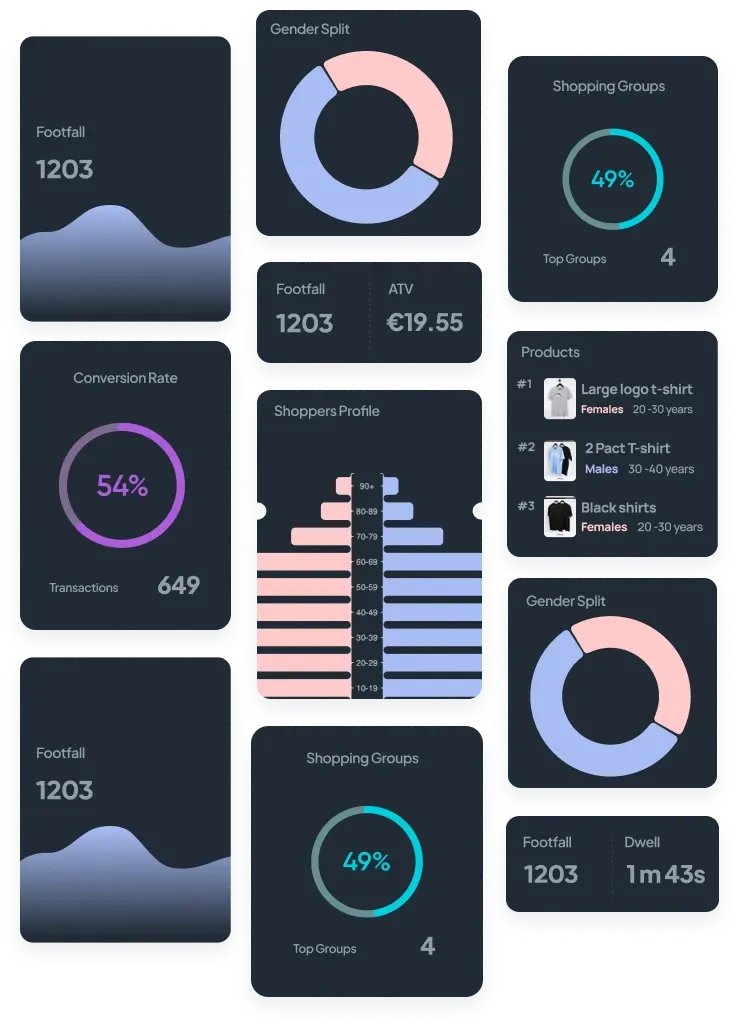Why has Computer Vision become so popular for shopper insights?
Keith Monaghan
August 11, 2025
Computer Vision is becoming retail’s sharpest set of eyes and it’s no accident, so says Shish Shridhar, one of Retail Technology Innovation Hub’s top 100 Retail Technology Influencers. He cites queue management, detection of depleted stock, spills, and shopper patterns as some of the main areas where computer vision excels.
Shish has been a thought leader in AI for retailers, having been with Microsoft for the best part of twenty years. Recent conclusions he has drawn from a host of differing tech companies in retail, have highlighted computer vision as the rock-solid way forward.
But what exactly is “computer vision” in this sense?
One of the simplest ways to explain computer vision is to imagine live streamed footage, which has computerised functions being carried out over the live feed. These functions can be as general as counting shoppers as they enter a store, or as specific as generating a profile for the shopper it is assessing. AI models can operate in fractions of seconds to accomplish their tasks, with information being delivered to retailers instantaneously.
The world of in-store insights really started to appear in an advanced way in the 2010’s. Before this decade, the only data stores could get on their in-store shoppers came in the form of footfall counters to get a broad idea on how many people were in the shop on any given day, and heat-mapping sensors which would give a general overview of where people in a shop were moving.
Arguably the best data was from loyalty programmes, where stores could understand the purchasing patterns from their regular shoppers. This data is brilliant as it is volunteered by the shopper and the retailer can assess the shopper personally, down to their name, age, gender, and how far they’ve likely travelled to get to the store.
However, as the loyalty data only gives checkout information and considering it’s from a small section of the overall shopper base, there is still a lot of data out there to be collected. There may be some additional data collected via credit card purchases; however not all stores adhere to this.
Certain grocery stores in the UK have openly admitted to using credit card information to track the frequency at which shoppers return, while others admit to analysing aggregated payment data to shopper patterns or items purchased over time. They don’t necessarily need to “admit” to this as this type of tracking is legal. It’s the credit card companies which have the opt-in out for customer’s data.
MasterCard for example, in its privacy policy from 2013, stated that it will “perform data analyses” which you need to choose to opt-out from, otherwise you are automatically opted-in. It can be perceived as very vague in its terms, but it pertains to this type of shopper data collection. There was never really a perfect solution to a store capturing all shopper data, and many solutions have cropped up over the years, giving retailers a subtle way of collecting data, without the need to add more cameras into a store.
Shish continues in his examination by saying that computer vision, together with AI, has so much potential. AI models running over a live feed is simple, easy to update, and difficult to displace. The alternatives to computer vision for shopper data tend to promise a great deal, but ultimately can only cover so much:
EPOS Data only shows purchases, not behaviour or intent
Loyalty Programmes are opt-in and are biased towards repeat shoppers
Wi-Fi Tracking has inaccurate location data and ignores product interaction
People Counters only give an idea on numbers and are rarely accurate
RFID/Beacons are at the mercy of smart phone manufacturers
Why is accurate shopper data so important?
The retailers who operate brick-and-mortar locations have for years based their understanding of shopper activity through hearsay, depending on their store managers or area managers for wider information on the number of shoppers, profile of shoppers, buying patterns, and anything else related to the efficient running of the store(s).
But making decisions on store improvements based on limited knowledge on what’s really happening in a store, can have detrimental effects on budgets. With today’s connected world, it makes sense to mine as much data from the shop floor as possible to alter a store’s merchandise, layout, staff allocation, as effectively as possible.
The eCommerce revolution allowed retailers to see exactly the type of shopper engaging with their online platforms, which products are being looked at, and what caused drop-offs at the checkout stage. This type of data is of the utmost importance for the online world, and the closer the physical stores can get to that level of data, the easier store operations will become.
Get Started
What Gets Measured, Gets Managed!
VisionR mines data directly from shoppers as they navigate stores, empowering retailers with real-time insights to maximise their decisions & revenues.
